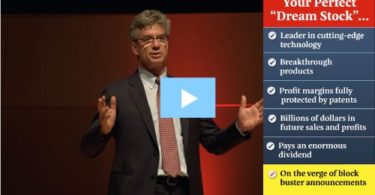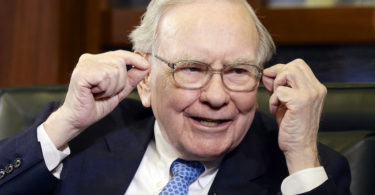Introduction
Voya Investment Management recently trimmed its stake in Avadel Pharmaceuticals (NASDAQ: AVDL). According to a Q1 2025 13F filing, Voya reduced its AVDL position by 8.3%, selling 2,340 shares and leaving just 25,811 shares (~$202,000 value) ([1]). This move comes amid broader institutional shuffling in AVDL: other investors actually increased their holdings. For example, Two Seas Capital boosted its stake by 15% to nearly 4.95 million shares (~$38.7 million) ([1]). In fact, roughly 69% of AVDL’s stock is held by hedge funds and institutional investors ([1]). The mixed institutional activity raises the question – with one fund paring back and others doubling down, what should investors make of Avadel’s prospects?
No Dividend History – All Focus on Growth
AVDL offers no dividend to investors. In fact, the company has never paid a cash dividend and does not anticipate doing so in the foreseeable future ([2]). This isn’t surprising for a clinical-stage biopharmaceutical firm: Avadel has been reinvesting any cash into developing and commercializing its lead drug rather than returning cash to shareholders. Traditional income metrics like FFO/AFFO (commonly used for REITs) don’t apply here. Investors in AVDL are clearly betting on capital appreciation through the company’s growth, not on dividend yield.
Leverage and Debt Maturities
Avadel’s balance sheet carries moderate leverage stemming from financing its drug launch. The company addressed a looming 2023 debt maturity by restructuring its convertible notes: in April 2023 Avadel exchanged about $96.2 million of notes due 2023 for new 6.0% exchangeable senior notes due April 1, 2027 ([3]). (Approximately $21 million of the old notes were left to mature in Oct 2023 and have since been resolved.) The new 2027 convertible notes total roughly $106 million in principal ([4]) and can convert to equity at a price around $9.78 per share (making conversion attractive with AVDL stock now well above that). These notes carry a manageable interest cost (~$6.4 million annually) which the company can now cover thanks to improving cash flow.
In addition, Avadel secured a $75 million royalty-based financing from RTW Investments in 2023 to fund the LUMRYZ launch ([3]) ([3]). Under this deal, Avadel received an initial tranche (about $35 million recorded as a “royalty financing” liability) and in return owes RTW single-digit percentage royalties on U.S. net sales of LUMRYZ ([3]). This non-dilutive financing means Avadel’s debt obligations will be paid down via a portion of future sales rather than fixed repayments.
G
The Golden Anomaly — explained
Tap to expand for Buffett's probable target + 4 small miners with 10–100x potential
Bottom line: Avadel’s net debt is relatively low given its ~$1.5 billion market cap. As of mid-2025, it held $81.5 million in cash and securities ([5]), providing liquidity for operations. With LUMRYZ now generating positive cash flow, Avadel appears capable of servicing its 6% notes and royalty obligations without near-term distress. Importantly, there are no major debt maturities until 2027, giving management a runway to grow earnings before any refinancing. And if AVDL’s share price remains high, the 2027 notes could even convert to equity (or be mandatorily exchanged by Avadel) well before maturity, further deleveraging the balance sheet.
Growth Trajectory and Valuation
Avadel’s financial performance has inflected sharply upward since the FDA approval and launch of LUMRYZ (its once-nightly narcolepsy drug) in mid-2023. In the second quarter of 2025, Avadel reported \$68.1 million in LUMRYZ net revenue – a 64% jump year-over-year – and achieved net income of \$9.7 million (EPS \$0.10) ([1]). This marked the company’s first profitable quarter since launch, a significant milestone. Management consequently raised full-year 2025 revenue guidance to \$265–\$275 million ([5]) ([6]), reflecting confidence in continued adoption. As of Q2 2025, over 3,100 patients were on LUMRYZ therapy (up 63% from a year prior) ([5]) ([5]), and Avadel expects 3,300–3,500 patients by year-end ([7]). The CEO has even stated they are pursuing the “billion-dollar market potential” of LUMRYZ in narcolepsy ([7]).
In terms of valuation, AVDL’s recent share price (~\$15) gives a market cap near \$1.5 billion ([1]). Against the new revenue forecast, this is roughly 5.5× 2025 sales, which is not unreasonable for a biotech with a fast-growing, high-margin product. Traditional earnings multiples are less meaningful at this early stage – trailing 12-month earnings are still only around breakeven (reflected in a nominal P/E ratio of –509 due to prior losses) ([1]). However, if Avadel delivers on guidance, it could approach \$20–\$40 million of positive cash flow in 2025 ([7]) ([7]), implying a forward EV/EBITDA that will improve quickly as sales scale.
Start collecting royalty checks before the first national payout.
Step 1
Learn the exact royalty play paying monthly checks
Step 2
Start with as little as $50 — get paid next month
Step 3
Position yourself before Wall Street moves in
It’s also useful to compare the market opportunity: Jazz Pharmaceuticals, which sells the older twice-nightly oxybate (Xyrem/Xywav), generated about \$1.47 billion in oxybate sales in 2024 from ~14,000 narcolepsy and IH patients ([8]) ([8]). Avadel’s \$1.5 billion valuation suggests the market is pricing in that LUMRYZ can capture a meaningful share of this market over time, though not the entirety. At \$100k+ annual revenue per patient (in line with oxybate pricing), Avadel would need on the order of 10,000 patients (including future idiopathic hypersomnia indication) to justify a multi-billion valuation. With 3,100 patients on therapy mid-2025 and strong growth, that target seems plausible in coming years – but it will depend on execution and competition.
Risks and Red Flags
Despite the encouraging outlook, investors should be aware of several risks and challenges facing AVDL:
– Competition & Pricing Pressure: Avadel’s LUMRYZ competes directly with Jazz’s entrenched oxybate therapies and now generic rivals. In 2023, Hikma and Amneal launched authorized generic versions of Jazz’s twice-nightly Xyrem ([2]). Additional generics are slated to enter by 2026 under patent settlement deals ([2]). These cheaper alternatives could pressure LUMRYZ’s market share or force price concessions, even though LUMRYZ offers the benefit of once-nightly dosing. Jazz is also heavily promoting Xywav (a reformulated oxybate) and had over 10,000 narcolepsy patients on Xywav by end of 2024 ([8])【28†L17-L24】. Avadel must persuade patients and physicians that once-nightly dosing is worth any insurance hurdles, and it must navigate potential payer pushback if generics significantly undercut costs.

The #1 Altcoin To Buy The Dip — Right Now
Small price. Big upside. Bryce Paul reveals the lending crypto smart money can’t ignore.
– Single-Product Dependence: LUMRYZ is Avadel’s only commercial product and essentially the company’s sole source of revenue ([2]) ([2]). This concentration adds risk – any setback with LUMRYZ would have an outsized impact. For instance, manufacturing or supply issues, unexpected safety problems, or new efficacy data from competitors could derail sales. Avadel is pursuing a new indication (idiopathic hypersomnia) for LUMRYZ, but that pivotal trial won’t read out until 2026. In the meantime, Avadel has no diversified revenue streams to buffer against LUMRYZ-specific problems.
– Exclusivity and Patent Uncertainties: While Avadel benefitted from a legal win against Jazz and now enjoys 7-year Orphan Drug Exclusivity for LUMRYZ in narcolepsy (through mid-2030 for adults) ([2]) ([2]), this protection is time-limited. After expiration, rivals could attempt to introduce competing once-nightly oxybates. Avadel has amassed a portfolio of 30 U.S. patents on LUMRYZ extending into 2037–2042 ([2]), which should help defend its franchise beyond the orphan period. However, patent challenges are always possible in the pharmaceutical industry. Investors should monitor any litigation or generic filings targeting LUMRYZ’s IP – a patent loss could open the door to competition earlier than expected.
– Regulatory and Safety Constraints: LUMRYZ (sodium oxybate) is a controlled substance with a strict FDA Risk Evaluation and Mitigation Strategy (REMS) program due to risks like CNS depression and abuse potential ([6]) ([6]). The distribution of LUMRYZ is tightly regulated – patients and prescribers must enroll in the REMS program, and only certified pharmacies can dispense it ([2]) ([2]). These requirements, while necessary for safety, create friction in the prescribing process and could limit uptake. Any compliance failures could lead to severe penalties or even withdrawal of the drug’s approval ([2]). Additionally, if the DEA were to impose quota limits or additional controls on oxybate drugs, it might cap Avadel’s growth.
– Financial and Execution Risks: Although Avadel is now generating cash, the cost of commercial ramp-up is high – selling, general & admin expenses were \$181 million in 2024 ([7]) as the company built out a salesforce and patient support programs. Management must balance growth investments with profitability. There is a risk that operating costs could spiral or that revenue might plateau, squeezing margins again. Furthermore, Avadel’s guidance assumes continued smooth execution (e.g. converting patients from Jazz’s therapy, expanding reimbursement). Any hiccup – such as slower patient onboarding or insurance barriers – could cause Avadel to miss its ambitious targets. High insider or institutional ownership also means the stock can be volatile if a major holder (like the 14% stake by Janus Henderson ([9])) decides to unload shares.
Most of these risks are inherent to a single-product biotech. Investors should weigh them against Avadel’s current momentum and de-risking milestones (FDA approval in hand, lawsuits resolved, positive early sales). The recent small selloff by Voya may simply reflect profit-taking or rebalancing, but it’s a reminder that institutional sentiment can shift quickly if the outlook changes.
Outlook and What’s Next for Investors
Going forward, several key factors and milestones will shape AVDL’s trajectory:
– Market Penetration vs. Jazz and Generics: How quickly can Avadel grow the LUMRYZ patient base from ~3,000 to, say, 5,000+? The company’s goal is to eventually tap the full “billion-dollar” narcolepsy market ([7]), but that requires converting a large share of patients who are on twice-nightly oxybate or new to therapy. Investors should watch prescription trends and market share data in upcoming quarters. Any signs of slowing growth or intensified competition (e.g. Jazz cutting Xywav’s price or aggressive generic discounts in 2026) would be red flags. Conversely, continued 50%+ year-over-year revenue growth would reinforce the bull case.
– Progress in Idiopathic Hypersomnia (IH): LUMRYZ’s expansion into IH could unlock a new patient population (Jazz already has ~3,900 IH patients on Xywav ([8])). Avadel’s Phase 3 REVITALYZ trial in IH is slated to complete enrollment by end of 2025 ([5]) ([5]), with topline data in 2026. Positive results could lead to an FDA approval for IH, potentially adding hundreds of millions in annual sales. This is a medium-term catalyst to monitor. On the flip side, if the IH trial disappoints or faces delays, Avadel would remain confined to the narcolepsy market and lose a growth avenue.
– Operational Execution and Cash Management: Investors should track Avadel’s profitability metrics now that it has turned the corner to positive EPS. Is each incremental dollar of revenue bringing a greater proportion to the bottom line? The company expects \$20–\$40 million of cash flow in 2025 ([7]) ([7]); achieving the high end of that range would signal strong operating leverage and might support a higher valuation. Avadel’s current cash ($81 million mid-2025) plus cash generation should comfortably fund its operations and IH trial, but any unexpected cash burn or new financing (e.g. a secondary offering or large expense) would be a sign to re-evaluate. So far, the balance sheet strategy – using an ATM program sparingly (just $1.7 million raised in H1 2025) ([5]) ([5]) and non-dilutive debt/royalty financing – has been shareholder-friendly. Continuation of this discipline is a positive for investors.
– Potential M&A or Partnerships: With a growing revenue stream and unique asset, Avadel could become an acquisition target or seek partnerships. Larger pharma companies focused on sleep/neurology might find LUMRYZ attractive, or Avadel could strike a deal to market LUMRYZ in markets outside the U.S. (the drug is currently approved only in the U.S.). Any rumors or developments on this front could significantly affect the stock. Alternatively, Avadel’s management may choose to remain independent and expand its portfolio (they have stated they are evaluating opportunities to broaden the pipeline ([2]) ([2])). Investors should stay tuned for any strategic moves – an astute acquisition or licensing of a new product could diversify the company and reduce the one-drug reliance risk.
In summary, Avadel Pharmaceuticals is at a pivotal stage. One mid-sized fund trimming its stake is not necessarily a verdict on the company – particularly when many other institutions are increasing positions ([1]). The core story remains the LUMRYZ launch: if Avadel continues to execute well, growing sales and profits, investor confidence is likely to build further. However, the road ahead is not without obstacles, from competitive pressures to the need for flawless execution. Current and prospective investors should keep a close eye on the company’s quarterly performance, competitive developments, and pipeline progress. With the stock up significantly over the past year (52-week low of \$6.38 to high of \$16.66) ([1]), expectations are elevated. “What’s next” for AVDL will hinge on converting promise into sustained earnings – a challenge that management appears “laser-focused”** on meeting ([7]). The next few quarters (and the 2026 IH trial readout) will be crucial in determining whether Avadel’s investors are rewarded for that faith, or whether some of today’s risks begin to weigh more heavily on the story.
Sources
- https://etfdailynews.com/2025/10/01/voya-investment-management-llc-cuts-stock-holdings-in-avadel-pharmaceuticals-plc-avdl/
- https://sec.gov/Archives/edgar/data/1012477/000101247725000010/avdl-20241231.htm
- https://avadelpharmaceuticalsplc.gcs-web.com/news-releases/news-release-details/avadel-pharmaceuticals-enters-royalty-agreement-rtw-investments
- https://sec.gov/Archives/edgar/data/1012477/000101247723000012/avdl-20230331.htm
- https://investors.avadel.com/news-releases/news-release-details/avadel-pharmaceuticals-reports-second-quarter-2025-financial
- https://globenewswire.com/news-release/2025/08/07/3129068/0/en/avadel-pharmaceuticals-reports-second-quarter-2025-financial-results-and-raises-2025-revenue-guidance.html
- https://investors.avadel.com/news-releases/news-release-details/avadel-pharmaceuticals-reiterates-2025-guidance-it-reports
- https://sleepreviewmag.com/sleep-treatments/pharmaceuticals/prescription-drugs/sodium-oxybate-product-trends-jazz-pharma-2024-sales/
- https://fintel.io/th/so/us/avdl
For informational purposes only; not investment advice.





